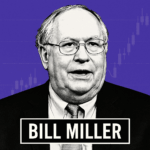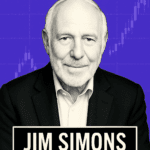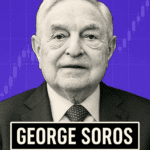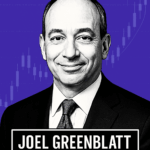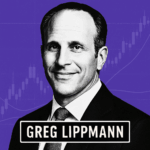THINK AND INVEST LIKE MICHAEL BURRY
The Strategy
My strategy isn’t very complex. I try to buy shares of unpopular companies when they look like road kill, and sell them when they’ve been polished up a bit. Management of my portfolio as a whole is just as important to me as stock picking, and if I can do both well, I know I’ll be successful.
Weapon of Choice: Research
My weapon of choice as a stock picker is research; it’s critical for me to understand a company’s value before laying down a dime. I really had no choice in this matter, for when I first happened upon the writings of Benjamin Graham, I felt as if I was born to play the role of value investor. All my stock picking is 100% based on the concept of a margin of safety, as introduced to the world in the book “Security Analysis,” which Graham co-authored with David Dodd. By now I have my own version of their techniques, but the net is that I want to protect my downside to prevent permanent loss of capital. Specific, known catalysts are not necessary. Sheer, outrageous value is enough.
I care little about the level of the general market and put few restrictions on potential investments. They can be large-cap stocks, small cap, mid cap, micro cap, tech or non-tech. It doesn’t matter. If I can find value in it, it becomes a candidate for the portfolio. It strikes me as ridiculous to put limits on my possibilities. I have found, however, that in general the market delights in throwing babies out with the bathwater. So I find out-of-favor industries a particularly fertile ground for best-of-breed shares at steep discounts. MSN MoneyCentral’s Stock Screener is a great tool for uncovering such bargains.
How do I determine the discount? I usually focus on free cash flow and enterprise value (market capitalization less cash plus debt). I will screen through large numbers of companies by looking at the enterprise value/EBITDA ratio, though the ratio I am willing to accept tends to vary with the industry and its position in the economic cycle. If a stock passes this loose screen, I’ll then look harder to determine a more specific price and value for the company. When I do this I take into account off-balance sheet items and true free cash flow. I tend to ignore price-earnings ratios. Return on equity is deceptive and dangerous. I prefer minimal debt, and am careful to adjust book value to a realistic number.
I also invest in rare birds — asset plays and, to a lesser extent, arbitrage opportunities and companies selling at less than two-thirds of net value (net working capital less liabilities). I’ll happily mix in the types of companies favored by Warren Buffett — those with a sustainable competitive advantage, as demonstrated by longstanding and stable high returns on invested capital — if they become available at good prices. These can include technology companies, if I can understand them. But again, all of these sorts of investments are rare birds. When found, they are deserving of longer holding periods.
Beyond Stock Picking
Successful portfolio management transcends stock picking and requires the answer to several essential questions: What is the optimum number of stocks to hold? When to buy? When to sell? Should one pay attention to diversification among industries and cyclicals vs. non-cyclicals? How much should one let tax implications affect investment decision-making? Is low turnover a goal? In large part this is a skill and personality issue, so there is no need to make excuses if one’s choice differs from the general view of what is proper.
I like to hold 12 to 18 stocks diversified among various depressed industries, and tend to be fully invested. This number seems to provide enough room for my best ideas while smoothing out volatility, not that I feel volatility in any way is related to risk. But you see, I have this heartburn problem and don’t need the extra stress.
Tax implications are not a primary concern of mine. I know my portfolio turnover will generally exceed 50% annually, and way back at 20% the long-term tax benefits of low-turnover pretty much disappear. Whether I’m at 50% or 100% or 200% matters little. So I am not afraid to sell when a stock has a quick 40% to 50% a pop.
As for when to buy, I mix some barebones technical analysis into my strategy — a tool held over from my days as a commodities trader. Nothing fancy. But I prefer to buy within 10% to 15% of a 52-week low that has shown itself to offer some price support. That’s the contrarian part of me. And if a stock — other than the rare birds discussed above — breaks to a new low, in most cases I cut the loss. That’s the practical part. I balance the fact that I am fundamentally turning my back on potentially greater value with the fact that since implementing this rule I haven’t had a single misfortune blow up my entire portfolio.
I do not view fundamental analysis as infallible. Rather, I see it as a way of putting the odds on my side. I am a firm believer that it is a dog eat dog world out there. And while I do not acknowledge market efficiency, I do not believe the market is perfectly inefficient either. Insiders leak information. Analysts distribute illegal tidbits to a select few. And the stock price can sometimes reflect the latest information before I, as a fundamental analyst, catch on. I might even make an error. Hey, I admit it. But I don’t let it kill my returns. I’m just not that stubborn.
In the end, investing is neither science nor art — it is a scientific art. Over time, the road of empiric discovery toward interesting stock ideas will lead to rewards and profits that go beyond mere money. I hope some of you will find resonance with my work — and maybe make a few bucks from it.
Fundamental Analysis at the Core
Michael Burry’s investment strategy is grounded in fundamental analysis, which involves a thorough examination of a company’s financial statements, market position, competitive advantages, and future prospects. He looks for discrepancies between a company’s stock price and its intrinsic value, often focusing on distressed or misunderstood companies that the market overlooks.
Key Financial Metrics and Ratios
One of the most basic yet essential metrics, the P/E ratio compares a company’s stock price to its earnings per share (EPS). Burry looks for stocks with low P/E ratios relative to their industry peers or historical averages, indicating they may be undervalued.
This ratio compares a stock’s market value to its book value, providing insights into how much investors are willing to pay for each dollar of a company’s net assets. A low P/B ratio can indicate a potentially undervalued stock, which Burry often seeks out.
Burry examines a company’s financial leverage by looking at its D/E ratio, which compares total liabilities to shareholders’ equity. A high D/E ratio might indicate a company with potentially higher risk due to its significant debt levels, but it can also highlight opportunities in distressed securities that Burry is known to explore.
Free cash flow (FCF) is a critical indicator of a company’s financial health, representing the cash a company generates after accounting for cash outflows to support operations and maintain capital assets. Burry focuses on companies generating positive and growing free cash flow, suggesting they have more flexibility for debt repayment, dividends, and reinvestment in growth opportunities.
Profitability ratios like operating margin and net profit margin are crucial for Burry. They provide insights into how efficiently a company converts revenue into actual profit. Higher margins indicate better operational efficiency and profitability, characteristics of companies that Burry might consider undervalued.
ROE measures a company’s profitability by revealing how much profit a company generates with the money shareholders have invested. High ROE values are often a sign of competitive advantage and managerial efficiency, key attributes for Burry’s investment selections.
While Burry places significant emphasis on financial metrics and ratios, he also considers qualitative factors that can affect a company’s intrinsic value. These include the quality of a company’s management team, its competitive advantages (or “moats”), market position, industry dynamics, and potential regulatory impacts. He is known for his detailed research and deep dives into the sectors or companies he invests in, often going against the grain of popular opinion.
Beyond The Numbers
Burry’s thoughts reflect not only his unique approach to investing but also his deep understanding of the intricacies of the market. Let’s now explore these insightful thoughts and strategies and the lessons they offer to investors.
Navigating Financial Waters
Michael Burry’s astute observation serves as a reminder of the importance of capital preservation. While it’s natural to focus on making profits, safeguarding your investments from losses is equally crucial. Burry’s approach is characterized by a meticulous assessment of risk, emphasizing the need to protect your capital diligently.
Unearthing Hidden Gems
Burry’s investment philosophy revolves around identifying undervalued and overlooked opportunities. His willingness to go against the crowd and invest in unpopular companies has yielded substantial returns. This quote underscores the potential for profit in contrarian investing, where patience and a discerning eye can uncover hidden value.
Watching the Lenders
Burry’s focus on lenders highlights the importance of monitoring the financial stability of institutions. Borrowers may pursue opportunities aggressively, but it’s the lenders who set the tone for responsible lending practices. Recognizing signs of excessive risk-taking among lenders can provide valuable insights into potential market downturns.
The Pursuit of Sustainable Returns
Burry’s long-term perspective on investing is evident in this quote. He emphasizes the need to seek investments with the potential for sustainable, high returns over extended periods. This approach discourages the pursuit of short-term gains and encourages investors to focus on building wealth steadily.
The Outsider’s Advantage
Burry’s ability to maintain an outsider’s perspective, even in the midst of financial markets, has been a key driver of his success. This trait allows him to critically assess prevailing market sentiments and make independent, well-informed decisions.
The Power of Intrinsic Value
This strategy underscores Burry’s belief in the importance of intrinsic value. Rather than relying solely on complex hedging strategies, he prefers to mitigate risk by investing in fundamentally sound, undervalued stocks. This approach aligns with the principles of value investing.
The Art of “Ick Investing”
Burry’s concept of “ick investing” emphasizes the value of exploring opportunities that others might dismiss due to their unappealing nature. Sometimes, these “ick” stocks can hold hidden potential, making them intriguing prospects for diligent investors.
Contrarian Roots
Burry’s evolution as an investor reflects his resistance to following popular trends blindly. During the dot-com bubble of the late ’90s, he remained committed to value investing principles, highlighting the importance of staying true to one’s convictions, even when the market appears irrational.
Investing Rules and Principles
This means buying stocks that are trading below their intrinsic value. This gives you a buffer in case the stock price falls.
Don’t follow the crowd. Instead, look for opportunities where the market is wrong.
Don’t invest in things that you don’t understand.
Don’t expect to get rich quick. Investing is a long-term game.
Additional Investing Principles
This means that the market can be wrong for a long time, and if you’re not careful, you can lose a lot of money if you’re not prepared for it.
This means that when everyone is getting excited about the market, it’s a good time to start getting worried.
This means that when everyone is feeling confident about the market, it’s a good time to start questioning their own assumptions.
How to Use Michael Burry’s Investing Rules and Principles
One of the core principles of Burry’s investing strategy is thorough research. He believes in digging deep into a company’s fundamentals and thoroughly understanding the industry in which it operates. Burry’s approach involves identifying undervalued assets that the market has overlooked, often driven by his independent thinking and contrarian views.
Burry emphasizes the importance of taking a long-term view when it comes to investing. He believes in identifying investments with strong long-term potential, even if short-term market conditions are unfavorable. This approach allows him to withstand short-term volatility and focus on the underlying value of the investment.
Burry is known for his value investing approach, which involves identifying stocks that are trading at a significant discount to their intrinsic value. He looks for companies with solid fundamentals, low price-to-earnings ratios, and attractive growth prospects. By investing in undervalued assets, Burry aims to generate substantial returns over time as the market recognizes their true worth.
Burry places a strong emphasis on the concept of a “margin of safety.” He seeks to invest in assets where the gap between the current market price and the intrinsic value is substantial. This approach helps protect against downside risks and provides a buffer in case of unexpected market fluctuations.
Burry is renowned for his contrarian views and willingness to go against the crowd. He believes that the market is not always efficient and can be driven by irrational behavior. By taking contrarian positions, he aims to identify investment opportunities that others may have overlooked or undervalued.
Effective risk management is a crucial aspect of Burry’s investing strategy. He believes in conducting a thorough analysis of potential risks before making any investment decisions. By carefully assessing risk factors, he aims to protect his capital and maximize potential returns.
Burry pays close attention to macroeconomic trends and their potential impact on the financial markets. He seeks to identify broader economic shifts that can create investment opportunities. This approach allows him to position his investments accordingly and take advantage of emerging trends.
